The Ladybug pram, a small dinghy with a wheel permanently fixed in a case in its bow, allows for a nearly seamless transition from the water to a beach, all the while keeping its passengers’ shoes dry. The boat can be built in either a 6' or a 7' model. I first spotted it at The WoodenBoat Show at Mystic Seaport, Connecticut, in 2008, on a visit to designer-builder Harry Bryan’s booth. The prototype Ladybug was perched on the grass in front of Harry’s display. Sitting there on its bottom, with oars-cum-wheelbarrow handles at the ready, the boat’s concept spoke for itself. Harry and I had barely exchanged pleasantries when I handed him $25 for a sheet of plans, and began set- ting up the project in my head. I needed this boat, as I’ll explain in just a minute. But first, allow me a short digression to illustrate this boat’s niche.Fifteen or so years ago, I went on an evening outing with friends in a 24' sloop in Maine; they were considering buying the boat, which the builder turned over to them for a few hours. We set out halfway through the tide’s ebb, rowing to the mooring from a gravelly beach—which had grown significantly wider when we returned to it at dead low tide after sailing. The prospect of lugging that dinghy up the beach after our pleasant sail was sheer drudgery. As we were considering our approach to the job, the sailboat’s owner-builder appeared on the beach in his pickup truck, drove to where we were standing, and stepped out of the cab without saying a word. He looped the beat-up fiberglass dinghy’s painter around his bumper hitch, returned to the cab, and stepped on the accelerator pedal. He hit stride at about 20 mph, the dinghy bouncing along behind him. The Ladybug pram, with a knobby tire permanently mounted in its bow, eases the transition from water to land for beach-based sailors.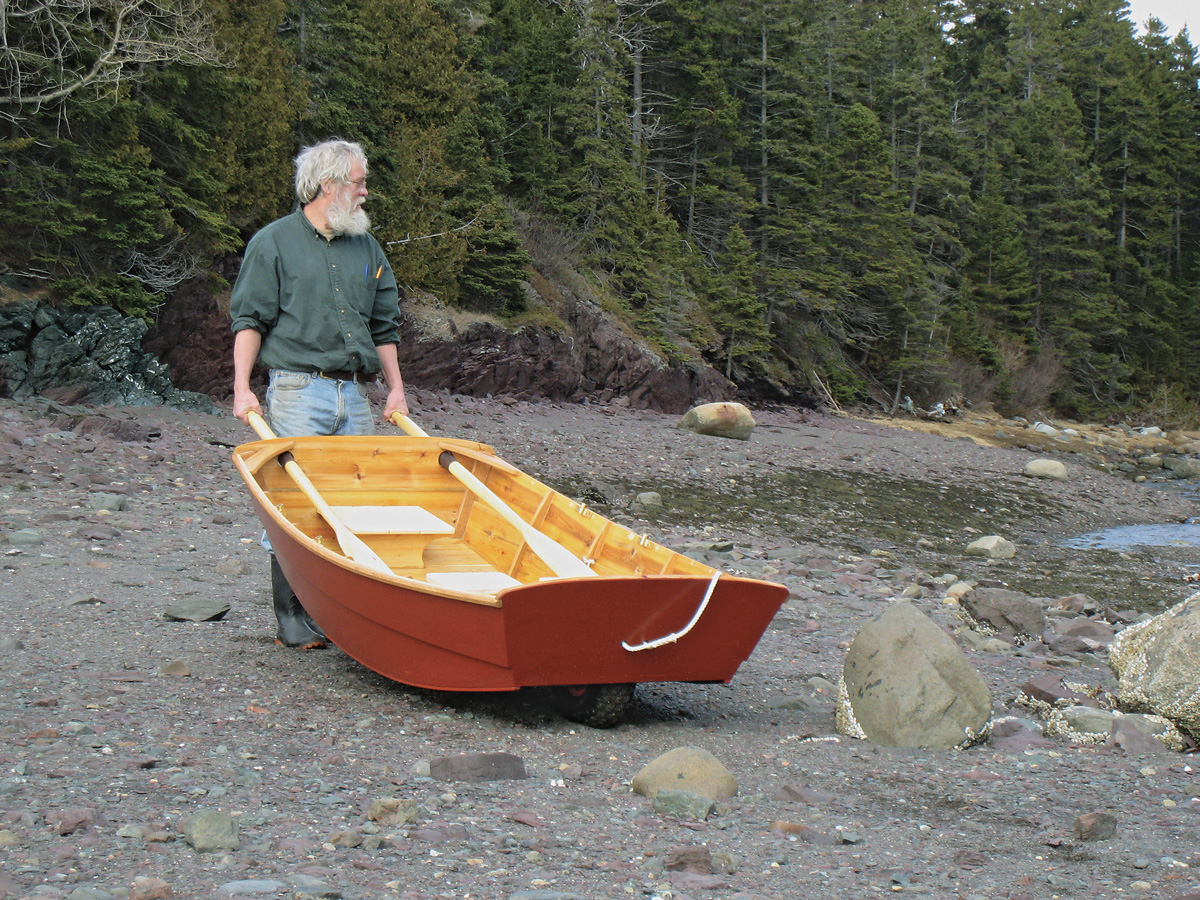 Photo by Bryan Gagner
Photo by Bryan Gagner
Join The Conversation
We welcome your comments about this article. To include a photo with your remarks, click Choose File below the Comment box.


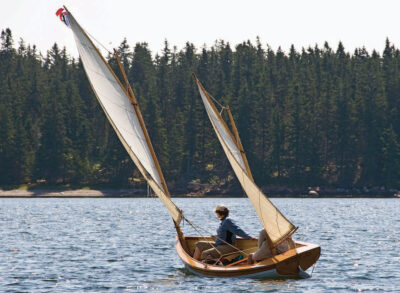
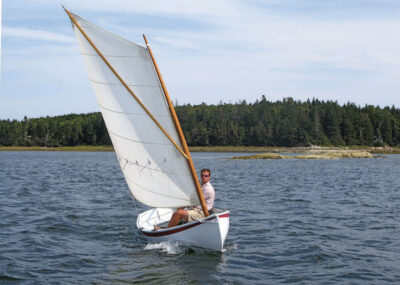
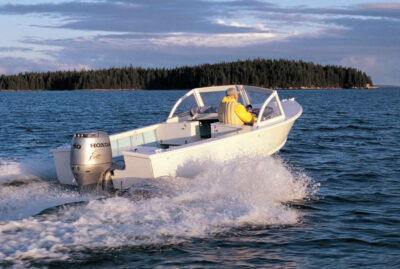

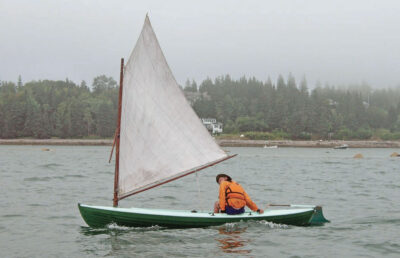
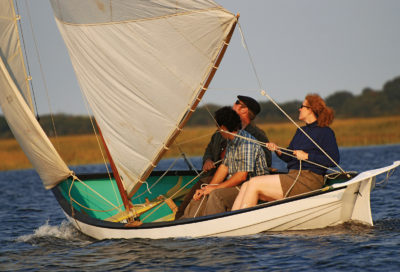
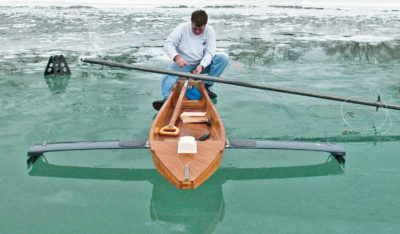
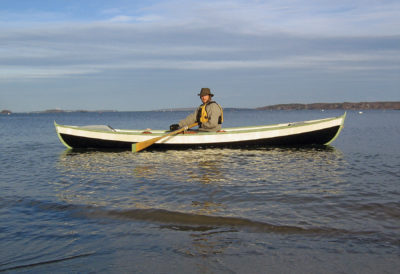
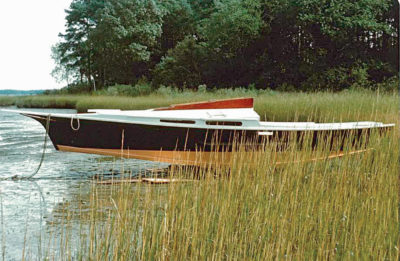
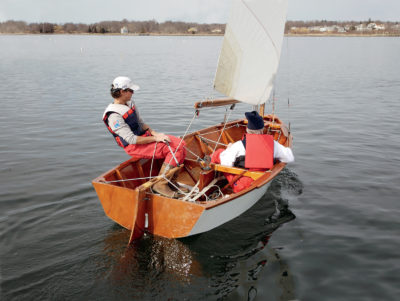
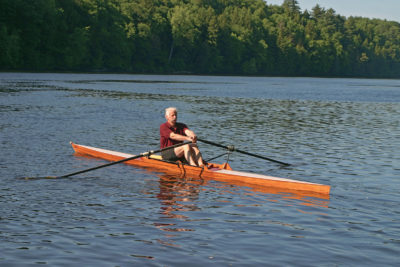
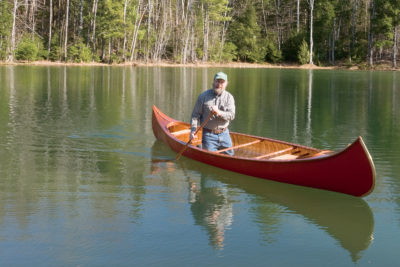
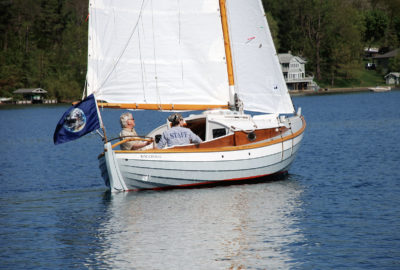
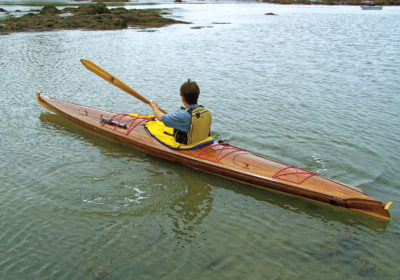
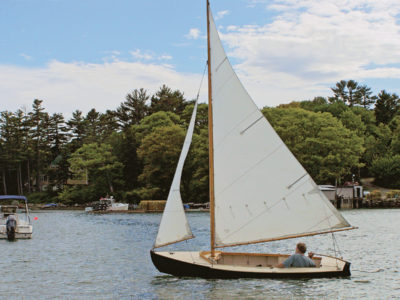
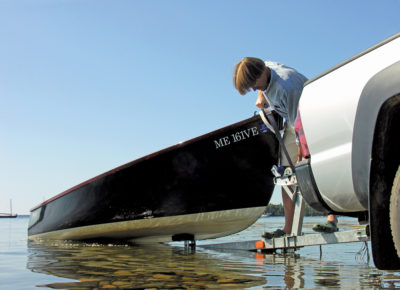
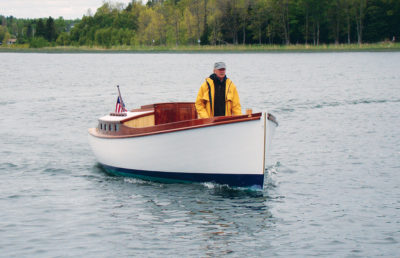
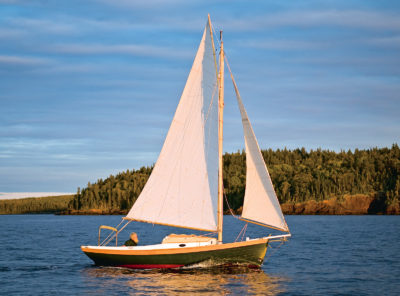
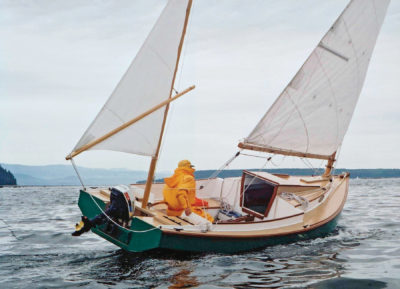

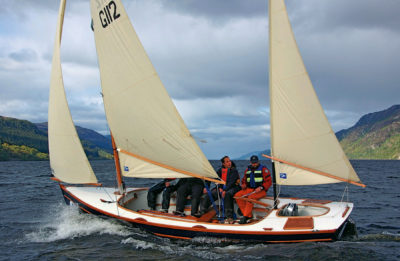
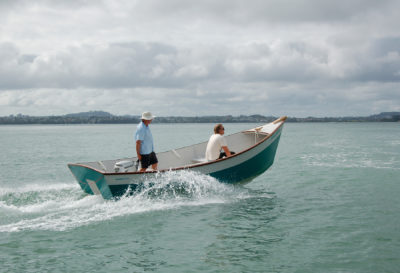
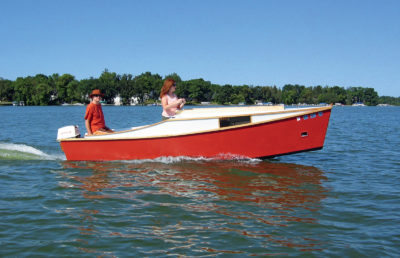
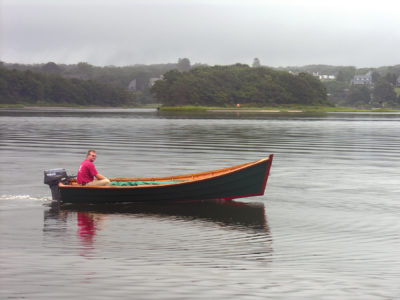
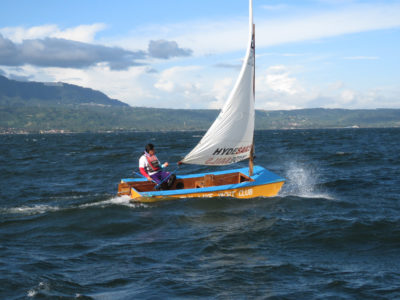


The wheel barrow boat was a lot of fun to build and my son used it to get out to his clam boat in Oyster Bay Harbor on Long Island NY.
The instructions were very good and it was nice to be able to turn the boat over by myself.
This is a perfect first boat for anyone who is thinking about boat building as a hobby.
Thanks for the memories
Over the years, I built two of these little dinks, both out of plywood. I see that Mr. Murphy departed as I did from Atkin’s design, in that Atkin drew the stern seat as a true thwart. Trouble with that was there was no room for your feet when rowing solo. I did not incorporate a wheel at either end, but I have seen other wheelbarrow boats (Pete Culler designed one, for example, with the wheel and its trunk in a central location to also act as a centerboard)
Atkin claimed lifeboat functionality by having flotation tanks at each end. I used blocks of closed cell foam instead. I found the little boat rowed quite well–certainly better than the plastic abominations one could get from the local department store. I once raced a Livingston dinghy pushed by a tiny snarling outboard, and beat him to the beach. We also found it quite capable in a chop.
We often towed it behind PLATERO, our little 21′ wooden cutter, an Ed Monk design built in 1935. One time, under perfect conditions (stiff breeze off the stern quarter, broad-reaching into a roller-coaster sea sliding down from far north in the Georgia Straight between Vancouver and Vancouver Island), the dinghy was planing on a taut towline. A couple of porpoises accompanied us for a few moments, popping up on one side and then the other. One of them dropped back to check out the planing dinghy, which delighted us. This was one of my favorite moments in years of sailing, and I still cherish fond memories of it.
Here’s a little ditty for those who can’t remember how to spell dinghy:
How dingy is the dinghy,
How peely is its paint;
It floats upon the water,
But a haughty yacht it ain’t.
I am wondering what the weight would be for this pram?
I never weighed mine; I cut into the stern seat a fingers-wide slot for a hand grip. This let me carry the dinghy vertically, though comfortably for only a short distance. I toyed with the idea of a wheel, but a narrow one in a trunk under the stern seat. My idea was that this would act as a sort of keg. The narrowness of the (hypothetical) wheel would have been to reduce drag.
I never regretted using plywood for planking, but I found bending in the chine logs to be a pain. Were I to build another one, I’d use stitch-and-glue for the sides-to-bottom connection.